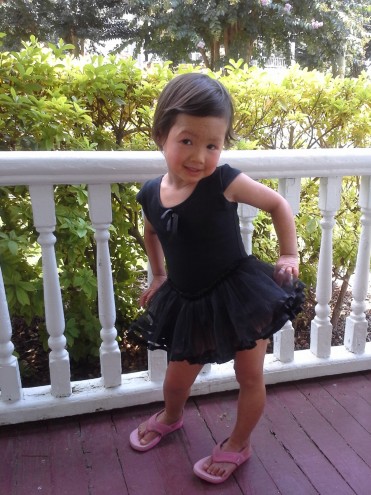Every adoption story is unique but if there’s one common thread, it has to be all the waiting that is involved. Waiting for the home study to be completed, waiting for the dossier to be sent, and waiting to travel. But waiting to find out who your son or daughter is may be the hardest part…at least it was for me. Like most adoptive moms, it’s fun yet also heartbreaking to look through countless pictures of precious waiting children in need of forever families. So on the night of March 25, 2013, when we got an email from our social worker with a file about a little girl, I knew at first sight all the waiting was well worth it.
As a nurse, I have gotten countless health questions over the years. But to be honest, the questions about skin issues are the hardest ones for me to answer. I never enjoyed learning about dermatological issues in nursing school and to this day they all seem very complex to me.
Well God indeed has a sense of humor, because this precious girl’s special need was listed as congenital ichthyosis, a rare genetic skin condition. I’d never heard of it, so I jumped on Google and was astonished at what I read and what my eyes saw. And to be perfectly honest, I was scared…but also in love.
And thankfully, love trumped fear. Over the next 48 hours, God led us to amazing dermatologists who explained ichthyosis, viewed the pictures we were given from the orphanage in China, and told us they would be thrilled to help care for our daughter if we adopted her. We sent our Letter of Intent on March 27, 2013 and left for China on November 9, 2013 to bring home our precious daughter.
Jenna has been home for almost 10 months and I feel like I’ve witnessed a miracle. She has brought so much joy to our family’s life and we have all grown in our awareness of God’s love for all the children of the world.
We have had the opportunity to share about our adoption story as well as educate people about ichthyosis.
What is ichthyosis?
The ichthyoses (plural) are a family of genetic diseases characterized by dry, thickened, scaling skin. There are approximately 28 recognized forms of ichthyosis and related skin types. Most varieties of ichthyosis are relatively rare, affecting only one person in several tens of thousands.
Ichthyosis can be a disfiguring disease, and as such has numerous social and psychological implications. The more severe forms of ichthyosis can cause many other problems. When the skin loses moisture, it becomes dry, tight, and rigid. This rigidity makes moving uncomfortable as it can cause the skin to crack and break open. Extreme thickening of the skin on the soles of the feet makes walking difficult for many individuals, and cracking around the fingers can make even simple tasks difficult or painful. In some types of ichthyosis the skin is very fragile and will rub off with the slightest abrasion. Cracks and abrasions then leave the skin open to infections.
Severe scaling on the scalp may interfere with normal hair growth. Thick scales elsewhere can block pores, making sweating difficult and increasing the risk of overheating. Although the outer skin is thicker in ichthyosis, it is less effective in preventing water and calorie loss. The rapid turnover of the outer layers of skin, in some forms of ichthyosis, also requires additional energy. Because of these greater energy needs, some children with severe ichthyosis may have trouble taking in enough calories to grow normally.
Some people with ichthyosis have trouble closing their eyes completely because the surrounding skin is so tight. This condition, called ectropion, causes the eyelids to turn outward, exposing the red inner lid and causing continuing irritation. If it is left untreated, damage to the cornea can develop, leading to impaired vision.
This picture was taken while Jenna was still in the orphanage in China:
This picture was taken after a boat ride this summer; the hot air with no water left Jenna’s skin extremely red, dry, and scaly:
Why is ichthyosis considered a special need?
It’s obvious that our precious Jenna and other children with ichthyosis have physical symptoms and often complications related to this rare skin condition. In addition, the psychological issues that children with ichthyosis may face while young and throughout their lives are vast and can be serious. Both Chinese and American cultures value beauty, and ichthyosis is quite visible to the “eye of the beholder.” We hope that Jenna will grow up knowing she is loved and wanted and not care about others’ opinions of her.
Daily life with ichthyosis consists of a lot of skin care. A daily bath regimen (and sometimes more than one bath) to soak the skin in water and exfoliate is imperative. Applying moisturizing lotions immediately after bathtime and throughout the day is also necessary. Staying cool during the heat of the day is very important since children with ichthyosis do not sweat and can get overheated very quickly. Eating plenty of nutritious food is often necessary since children with ichthyosis have a tendency to burn a lot of calories due to the rapid turnover of their outer skin layer and difficulty maintaining normal body temperature.
Jenna’s spunk, smile, giggles and even her feistiness have brought so much joy to our family. I pray that more children with ichthyosis will experience the gift of forever families.
~Guest post by Kelly, a Skin Conditions Mentor Mom
Waiting Child with Ichthyosis
Casey was born in February 2012 and is described as being extroverted, open and active. He loves to play outside, especially with balls and toy blocks. He can be gentle and really enjoys hugs from his caretaker. Casey can walk independently, is speaking and his mental development is comparable with his peers. Casey has been diagnosed with Ichthyosis, a skin disorder resulting in very dry skin. Read more about Casey here.



































Beautiful family! There is so much support in the ichthyosis community. We are adopting (domestically) a baby with harlequin ichthyosis. He has been home with us for two months and is a huge blessing to our family. Interestingly, his birthparents are Chinese. We are in love!
We also adopted our little man, who has Ichthyosis, internationally. He is from Eastern Europe and came home when he was about 4. Interestingly, I also have Ichthyosis but we have different types.
As soon as we saw the picture of our boy we identified him as our son. I truly believe that the Spirit organized the whole thing.
We are in the process of bringing home a little boy with ichthyosis from China! I loved reading this!